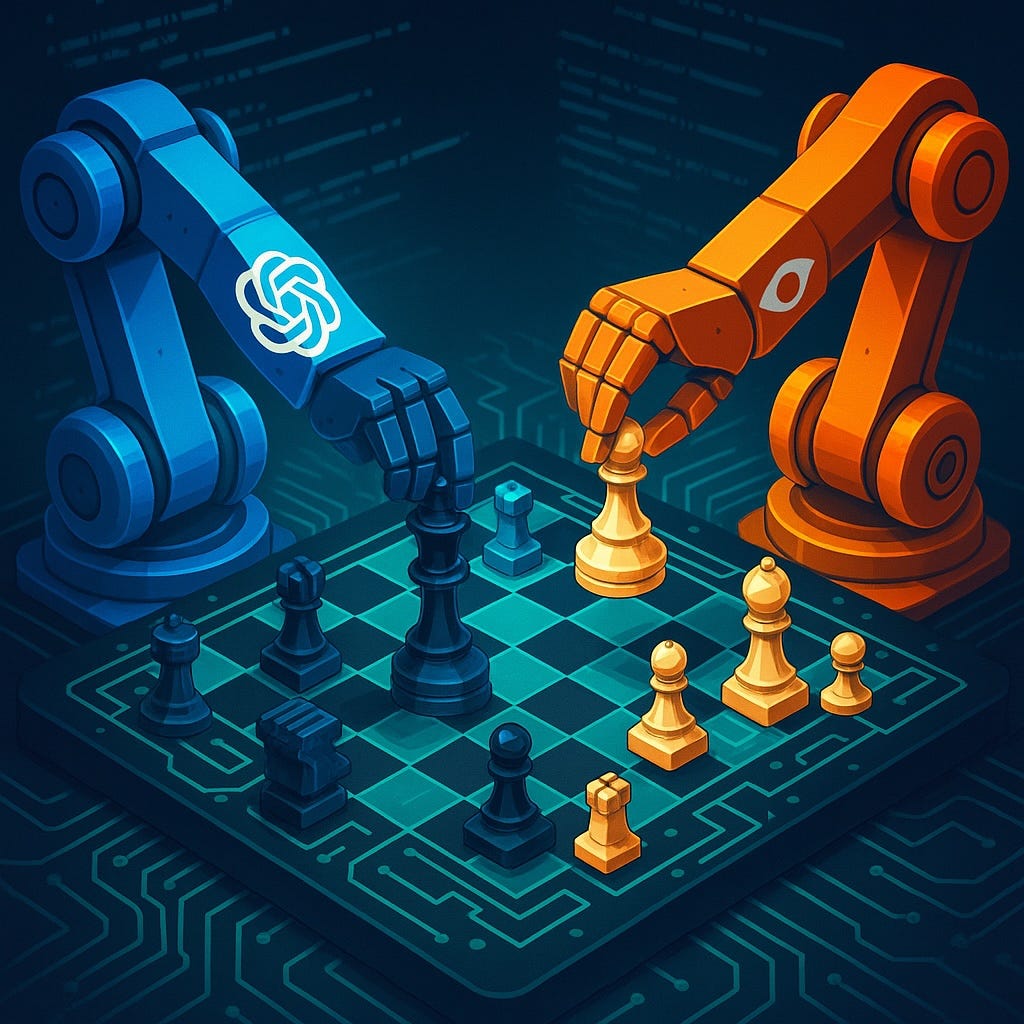In recent months, the competitive landscape within the artificial intelligence sector has intensified, highlighted by significant moves between essential players such as OpenAI and Anthropic. This evolving rivalry is emblematic of broader trends that are shaping the AI industry, particularly in relation to tool effectiveness, accessibility, and long-term profitability for businesses. For SMB leaders and automation specialists, understanding the comparative advantages and potential drawbacks of these platforms is essential for strategic decision-making.
OpenAI, celebrated for its flagship product ChatGPT, recently attracted substantial attention following a staggering $8.3 billion financing round, propelling its valuation to approximately $300 billion. The platform boasts a user base exceeding 800 million weekly users, translating to over 5.2 billion monthly visits. These staggering metrics not only reflect a robust and expanding customer ecosystem but also position OpenAI as a dominant force in the AI landscape. However, the perceived ease of integration and user-friendliness of OpenAI’s solutions may be eclipsed by potential pitfalls, including rising subscription costs and growing concerns surrounding data privacy.
In contrast, Anthropic has swiftly established itself as a formidable challenger, particularly with its Claude platform. Recently cutting off OpenAI’s access to Claude’s API on grounds of potential misuse for competitive advantage, Anthropic has framed this action as a defense of its intellectual property and proprietary technology. The company’s valuation has surged from $61.5 billion to offers exceeding $100 billion, underlining investor confidence in its long-term potential. Notably, Claude’s capabilities have shown staggering performance metrics, achieving a 79% success rate on SWE-bench tests, eclipsing GPT-4.1 by significant margins. This benchmarking success is crucial for businesses evaluating performance metrics when selecting automation platforms.
While performance statistics paint a picture of immediate efficacy, leaders must consider other factors such as scalability and cost. OpenAI’s broader infrastructure can sometimes translate into high operating costs for SMBs, particularly those just starting their automation journey. Conversely, Anthropic’s relatively leaner structure allows for more flexible pricing models, potentially offering superior ROI for smaller enterprises focused on maximizing the impact of automation without incurring hefty upfront investments.
Cost structures are critical in the context of long-term profitability. OpenAI’s tiered pricing model has garnered scrutiny for its rapid escalation as usage scales up, rendering the platform increasingly expensive for businesses striving to automate intensive workflows. Anthropic has positioned itself to mitigate such risks by actively engaging a more affordable pricing scheme while promising ongoing enhancements to Claude’s performance. This unique value proposition makes it a compelling option not only for large enterprises but also for SMBs looking to expand their capabilities without the burden of exponential costs.
Moreover, scalability is a crucial aspect when evaluating both platforms. As businesses grow, their needs evolve, necessitating tools that can adapt without excessive friction. OpenAI provides extensive API endpoints and integration capabilities that align well with larger organizational needs. However, for smaller businesses that may not require the full suite of advanced features initially, Anthropic offers sufficient flexibility to accommodate a gradual ramp-up in usage and integration. This agility allows SMBs to focus on core business functions while steadily implementing automation solutions.
As competition continues to heat up, both platforms are likely to evolve rapidly. OpenAI is anticipating the release of GPT-5 shortly, a move that signals its commitment to maintaining its lead through continuous innovation. However, leaks suggest that performance enhancements will be incremental rather than revolutionary, raising questions about whether the increases in costs will directly correlate with user experience improvements. On the other side, Anthropic’s proactive adaptation to shifts in usage patterns, coupled with its emphasis on rigorous ethical standards, presents an enticing alternative in a market increasingly concerned with governance issues.
One glaring takeaway from the current landscape is that while OpenAI may provide immediate access to a robust ecosystem, the escalating costs and the risks associated with data privacy are significant drawbacks. In contrast, Anthropic’s approach—balancing performance with a cost-effective and scalable solution—merits consideration from SMB leaders who may be cautious about future investments.
In conclusion, both OpenAI and Anthropic offer unique strengths and weaknesses that will influence decision-making for SMB leaders navigating the complexities of AI implementation. Evaluating not just immediate capabilities, but also cost implications and scalability, is essential in choosing the right platform.
FlowMind AI Insight: As the competitive dynamics between leading AI platforms unfold, SMBs should prioritize flexibility, cost-effectiveness, and ethical considerations in their automation strategies to stay competitive in an increasingly digitized landscape.
Original article: Read here
2025-08-03 07:00:00

